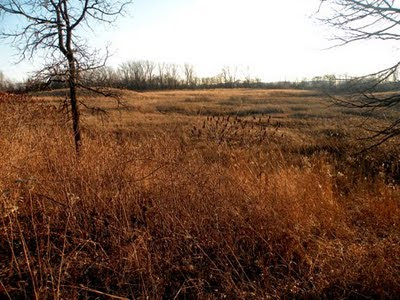
The closeout of the Malaysian trip was a day and a half in the Cameron Highlands. They are north of Penang on the mainland peninsula. Because they are at a higher elevation (about 6,500'), the climate is pleasantly cool and less steamy than it was at sea level in Penang. The cool moist climate is perfect for agriculture. The Cameron Highlands are especially known for growing strawberries and tea. Our hotel in the highlands was called Strawberry Park. More about the tea later.
We had arrived around 8:00 at night. Some folks went out black lighting that night. It was raining so I opted to stay in. Rain usually kills black lighting very thoroughly, and I couldn't see driving an hour each way to have nothing come into the sheet. Although the experience wasn't great, reports are that it ended up being pretty good. I keep being startled by the many ways in which the tropics differ from what I am used to. I did get up early and wander around the hotel grounds before sunup. It turns out that the lights of the hotel turned it into a Malaysian version of a magic gas station, so I had a pretty good time.
 Jungle trail- butterfly paradise
Jungle trail- butterfly paradise
After breakfast, we piled into the bus and drove downhill through increasingly lush rain forest. Our goal was a mountain stream. We wandered up the banks of the stream enjoying a tropical riot of butterflies and beetles.
 Tropical Skipper
Tropical SkipperThe Penang butterfly house employs a bunch of folks from this part of the country to collect small number of female butterflies to use as breeding stock. They were waiting along the stream for us as guides. Several of them had obviously used the old collector's trick of peeing in the damp sand on the stream banks. Dozens of tropical butterflies flew in and began sipping salts from the sand. I got to see a
Green Dragontail. I've been aware of them since I was a little boy and have always wanted to see one. I got just a fleeting glimpse and no photo- but that was enough.

A Jezebel Sulphur (Delias sp.)

Black and White Helen Swallowtail (Papilio nephelus)

Blue Triangle (Graphium sarpedon)

Not all of the beautiful insects here were butterflies (Cicindela aurulenta)
Lunch was in a small river village, and consisted of the now familiar Chinese food, including lots of seafood. After lunch, we stopped at a highland produce market.

There was lots of stuff for sale in addition to fruits and vegetables. The cut flowers were particularly colorful, though there were some questionable identifications.

Liatris- from the prairies of North America to Malaysia
But it definitely isn't lavender
And here we come to the part of the post that is especially for tea connoisseur extraordinaire UrSpo. It was now about 4:00 in the afternoon- tea time. What better way to spend it than at a tea plantation? We had the opportunity to stroll among the tea bushes, then had tea and scones with jam and cream at the tea shop. A delightful close to the afternoon.

Tea Plantation

Tea (Camellia sinensis)
Evening represented my really dumb move of the trip. We went black lighting, and it was very good. I left my camera in the hotel room. Therefore, I can only tell you about the stag beetle with the huge mandibles, or the inchworm moth that was the size of a swallowtail butterfly, or the riotously yellow and hot pink colored tiger moth that looked like a candy wrapper. They were pretty cool.

The following day, was our journey back to Penang in preparation for the return home. We spent the morning winding our way down the mountainside, getting more beautiful views of the Malaysian rain forest. We stopped along a river where hot springs at the water's edge seep into the stream. In addition to the usual stream side insects (such as dragonflies and tiger beetles) male butterflies visit this area to puddle. They are sipping salts that the hot springs deposit. This behavior is thought to help with sperm production.

The real draw here are the dozens of Rajah Brooks' Birdwing butterflies that come to puddle here. This is another species that I have been aware of since childhood and have long wanted to see. Seeing them here in this abundance was definitely the way to go. It was the perfect ending to my visit to the Cameron Highlands.

Rajah Brooks' Birdwing (Trogonoptera brookiana) Each of these butterflies has an 8" wingspan.
Each of these butterflies has an 8" wingspan. Labels: Butterflies, Malaysia, Tiger Beetles, Travel


























































